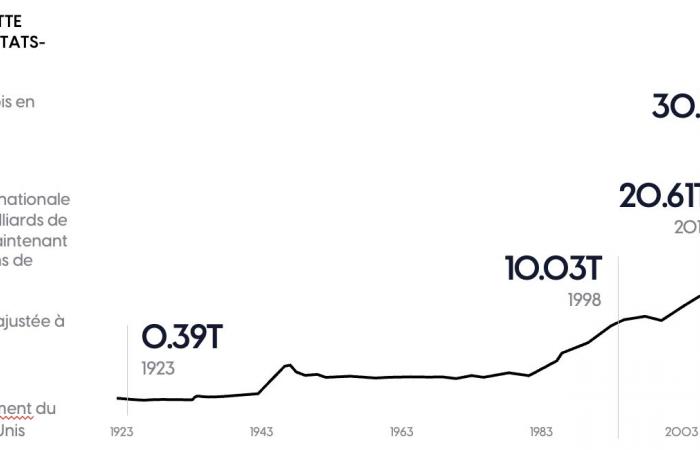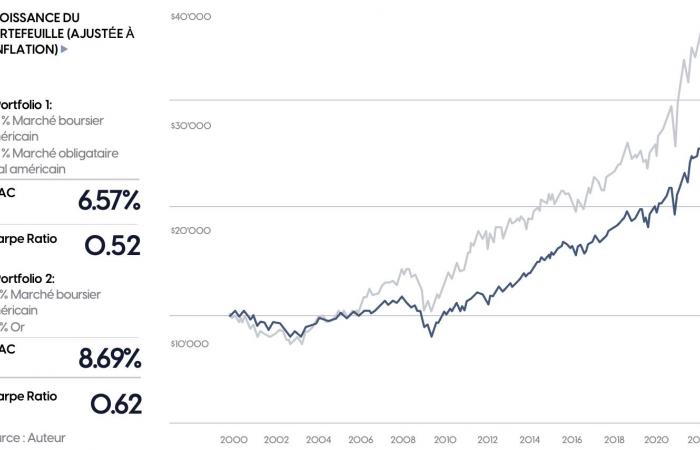For investors, replacing bonds with gold can strengthen portfolio resilience and provide better long-term returns.
The traditional 60-40 portfolio model, allocating 60% to stocks and 40% to bonds, has long been a balanced strategy. However, with high rates, inflation and market volatility, this model is being called into question. Can bonds still fulfill their stabilizing role?
In recent years, bonds have offered historically low yields, including rates close to zero. Inflation has eroded their value, making them less attractive. Gold, on the other hand, appears to be a credible alternative.
Historically, gold has played a crucial role in times of uncertainty. Considered a store of value, it protects against inflation and economic crises. When markets are volatile, gold often outperforms bonds, providing protection against global economic fluctuations. It is therefore a good substitute for the bond portion of the 60-40 model.
Gold tends to perform well when markets fall, providing a hedge against losses. The growing demand for gold, particularly from central banks, is reinforcing this trend.
According to several studies, a portfolio with 40% gold and 60% stocks would have generated higher returns than a traditional portfolio, with less volatility. Gold tends to perform well when markets fall, providing a hedge against losses. The growing demand for gold, particularly from central banks, is reinforcing this trend. They are buying more gold in the face of rate volatility and inflation. This strengthens gold’s position as a strategic alternative to bonds, with the potential for inflation protection and capital appreciation.
For investors, replacing bonds with gold can strengthen portfolio resilience and provide better long-term returns. Gold could be one of the few assets capable of preserving purchasing power in this inflationary environment. It is therefore essential to re-evaluate the asset allocation strategy. The 60-40 model, dominant for decades, may no longer correspond to current realities. Integrating more gold allows you to diversify and protect against inflationary risks.
What would happen if we replaced bonds with commodities like gold?
Unlike bonds, commodities perform better in inflationary environments. The 2020s are marked by increasing inflation, exacerbated by global debt, aging and the end of globalization. This makes commodities a better hedge against inflation.
Over the past four years, 30-year US Treasuries have caused losses of 40% to investors. In contrast, commodities have generated annualized returns of 10% to 14% since the start of the decade.
Commodities are at the start of a new bull market supported by several structural factors:
- Debt and deficits: Record global debt levels are leading to higher inflation, which is favorable for commodities like gold.
- Demography and de-globalization: Aging and the end of globalization increase production costs, boosting raw material prices.
- Energy transition: Demand for metals like copper, silver and palladium, essential for renewable energy, is expected to support demand for raw materials for decades to come.
In conclusion, since the 2000s, a portfolio consisting of 60% stocks and 40% bonds has obtained a compound annual performance (CAGR) of 6.57% with a Sharpe ratio of 0.52. In comparison, a portfolio of 60% stocks and 40% gold showed a compound annual return (CAGR) of 8.69% with a Sharpe ratio of 0.62. This shows that integrating gold not only improves returns, but also improves risk-return.









